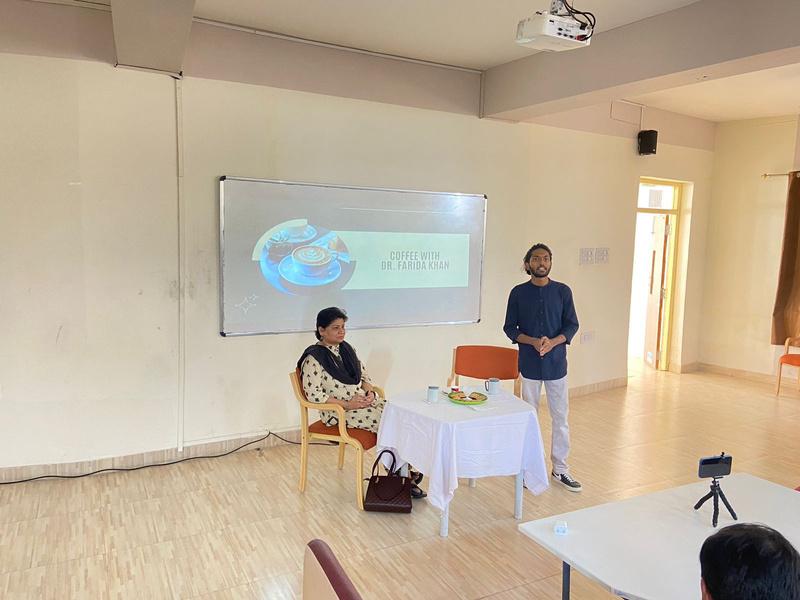
1 minute read
Coffee with Dr. Farida Khan
- Kanjul Verma( (22BOE10066)
Therearemorethan7000knownrarediseasesand morethan300millionpeopleareaffectedbythem worldwide.So,
Advertisement
WhatareRareDiseasesandiftheaffectedcrowd influxisthisoverwhelmingthenhowisitrare?
ThedefinitionofRareDiseasesisnotunanimous anddependsuponmultiplefactors.Thesefactors includethegeographicalarea,populationandthe prevalenceofmedicalaidpresentinthatregion.For example,ararediseaseintheUSissomethingthatis foundin1in200,000whileinAustraliaandIndia,it is5in10,000and1in25,000respectively.Thus, rarediseasesaredemographicincharacter.
Stakeholders,pharmacompanies,government healthministries,caregivers,etc.allhavetheir specificrepresentationsandformulatewhichdrugs and diseases fall into the category
Coffee with Farida Khan, conducted by Bandaru Hemanth Krishna, on 28th February, 2023.
Orphan Drug Act:
The Orphan Drug Act, passed in the US in 1983, lets us decide the geographical area for which we decide the rare diseases based on the criteria talked about earlier. Every country was called as a representative to formulate a policy accepted by the worldwide audience and a ratio is normalized for each country. An orphan drug is one used to treat, prevent or diagnose a rare or neglected disease. While a rare disease is the one described above, a neglected disease is something that has not been noticed for a while, technically speaking – eradicated in a given area.
How these diseases are being handled?
Now it would be both interesting and informative to note that the two categories of rare diseases i.e., the infectious and the non-infectious, are taken care of by two different organizations. Centre of Drug Control, Atlanta (CDC) is US based organization that aims to tackle the problems faced by people worldwide due to infectious diseases, food-borne pathogens, and other communicable disease causative agents. While rare noninfectious mainly occur due to genetic reasons caused either due to the carrier of some disease or manifest due to a mutation. They have a comprehensive spectrum and procedure of diagnosis.
Drawbacks to the policy of the FDA:Drawbacks to the policy of the FDA: FDA, closely in association with key stakeholders, patients, and advocates, aids in the development of drugs and devices to tackle rare diseases. On average FDA takes 1 year to find the cure for 1 rare disease and we have 5000-7000 recorded rare diseases. So, can you estimate how many centuries it would take to finally make every rare disease curable?
However, price of drugs is very high, leaving a middleclass family unable to afford such cures. Various Organizations have been working tirelessly to help better these conditions e.g.:
1) NORD: https://rarediseases.org/
2) GARD: https://rarediseases.info.nih.gov/
3) INDOUS: https://www.indousrare.org/about-us/
4) Global Gene: https://globalgenes.org/about-us/
Where does Bioengineering employ itself?
Mostly these diseases do not need a tablet form of therapy instead need some kind of supportive structure or prosthesis.
For e.g. -A small chip was placed inside the brain of a person facing a disease where his vision was getting lesser and lesser and ultimately, they were getting blind due to a stimulant in their brain. The development of the chip led to restoring their vision not completely but to some extent. So, people like they need bioengineers like you!





